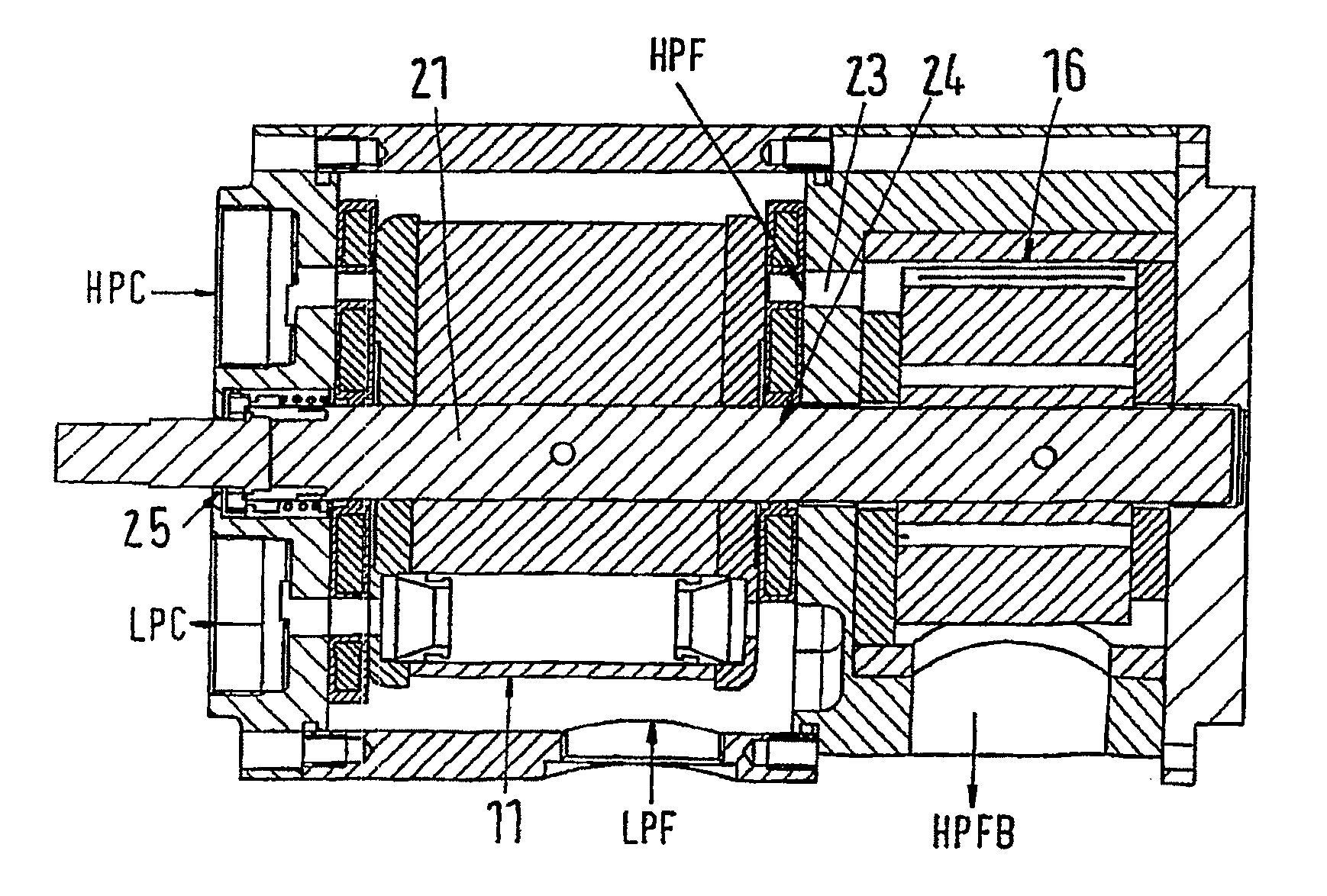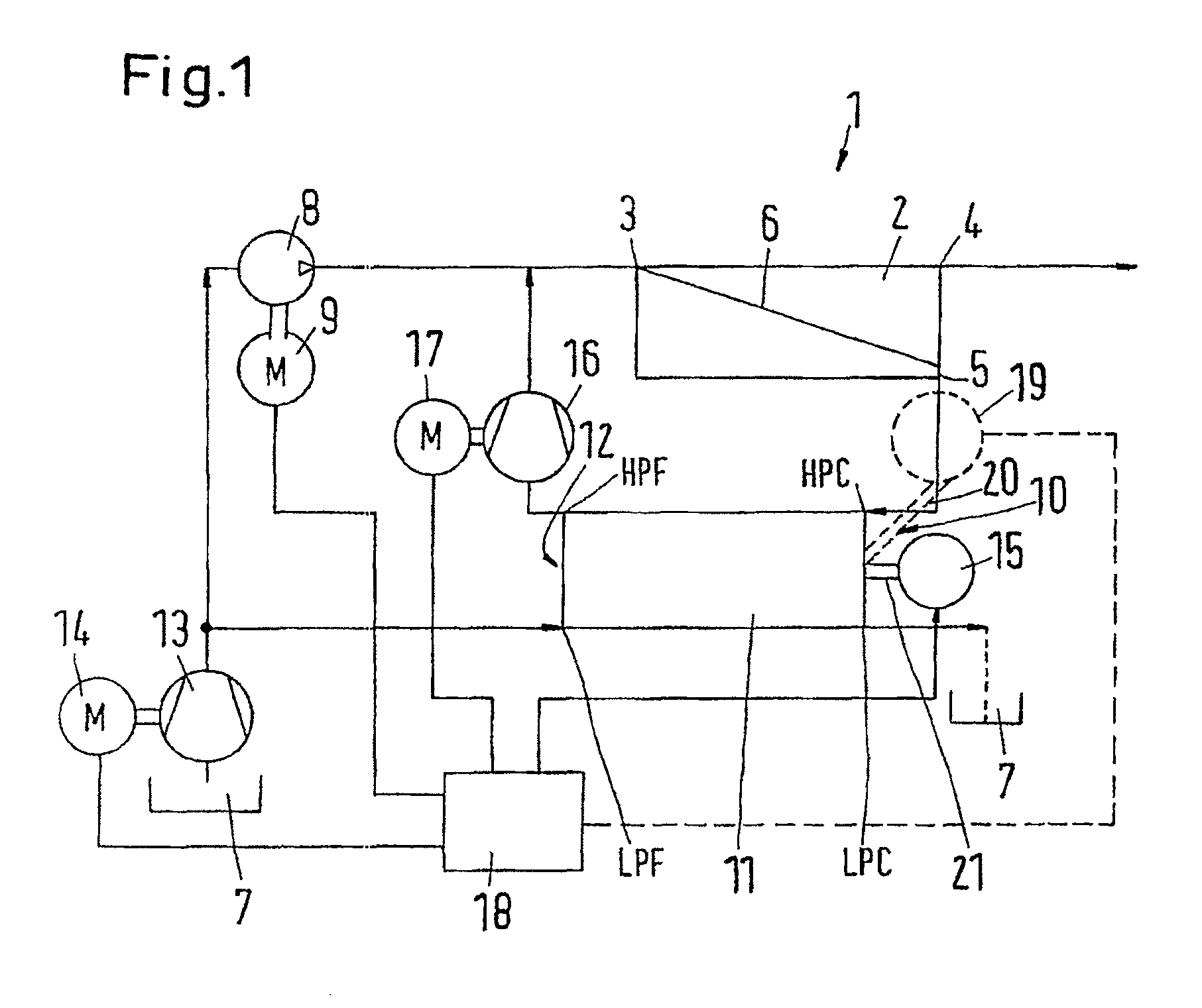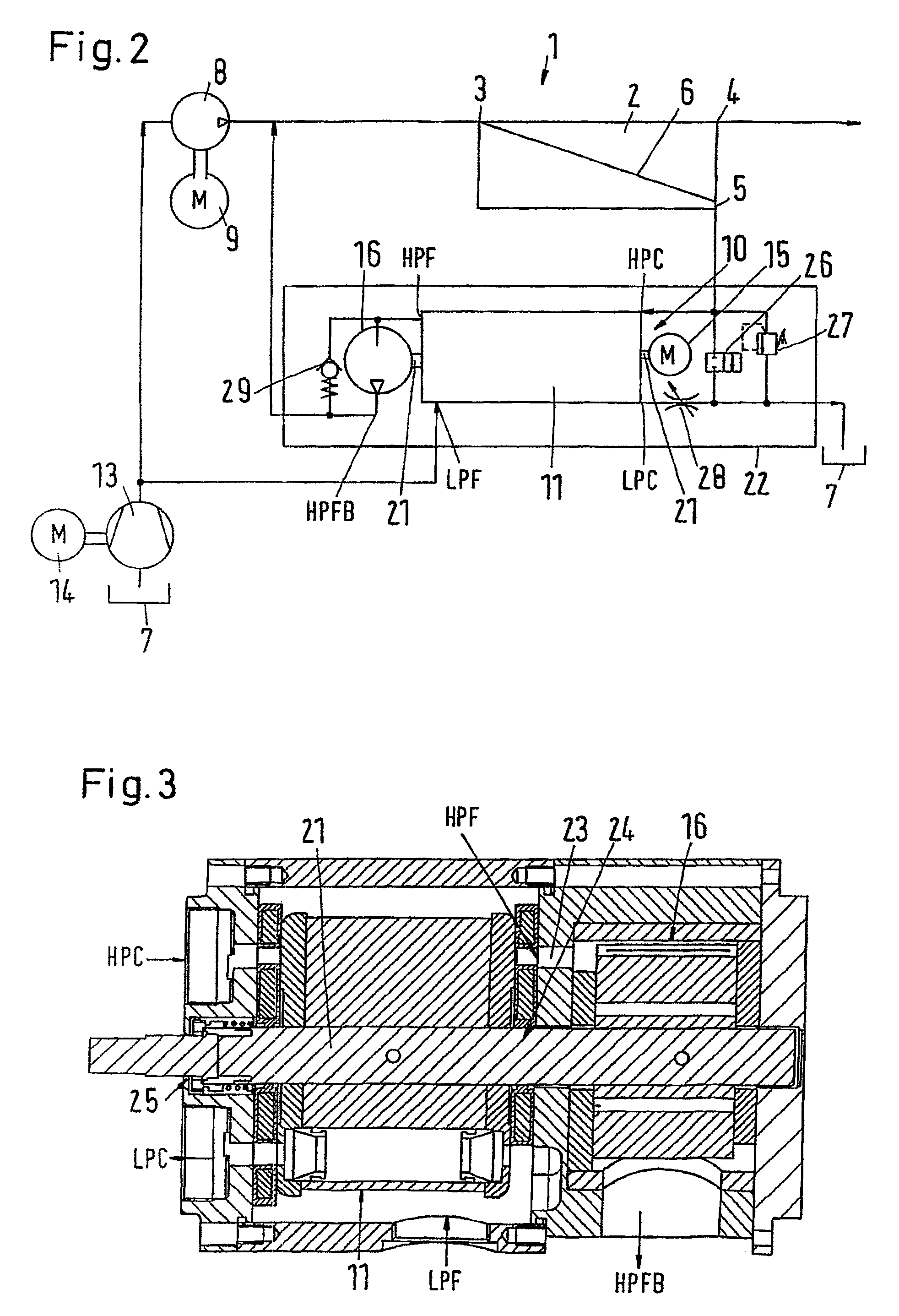Reverse osmosis system
a reverse osmosis and pump technology, applied in reverse osmosis, machines/engines, membranes, etc., can solve the problem of too short time available for pressure exchange, and achieve the effect of preventing pressure differences over displacement pumps
- Summary
- Abstract
- Description
- Claims
- Application Information
AI Technical Summary
Benefits of technology
Problems solved by technology
Method used
Image
Examples
Embodiment Construction
[0029]FIG. 1 is a schematic view of a reverse osmosis system 1, which can also be called a reverse osmosis plant or a reverse osmosis arrangement.
[0030]The reverse osmosis system comprises a membrane unit 2 with an inlet 3, a permeate outlet 4 and a concentrate outlet 5. A membrane 6 is arranged between the inlet 3 and the permeate outlet 4.
[0031]By means of a high-pressure pump 8, which is driven by a motor 9, the membrane unit 2 is supplied with feed water from a reservoir 7, for example, the sea. The high-pressure pump 8 can, for example, be a piston pump. The motor 9 can be an electric motor, which is controlled by a frequency converter. Thus, it is possible to drive the high-pressure pump 8 with variable speeds and thus variable outputs.
[0032]For reasons of simplicity, the water from the reservoir 7 will in the following be called “feed water”.
[0033]The concentrate outlet 5 is connected to a concentrate side 10 of a pressure exchanger 11, or rather, to a high-pressure concentra...
PUM
 Login to View More
Login to View More Abstract
Description
Claims
Application Information
 Login to View More
Login to View More - R&D
- Intellectual Property
- Life Sciences
- Materials
- Tech Scout
- Unparalleled Data Quality
- Higher Quality Content
- 60% Fewer Hallucinations
Browse by: Latest US Patents, China's latest patents, Technical Efficacy Thesaurus, Application Domain, Technology Topic, Popular Technical Reports.
© 2025 PatSnap. All rights reserved.Legal|Privacy policy|Modern Slavery Act Transparency Statement|Sitemap|About US| Contact US: help@patsnap.com



